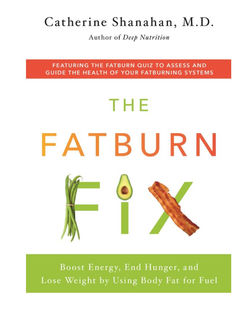"Eat meat and vegetables, nuts and seeds, some fruit, little starch and no sugar. Keep intake to levels that will support exercise but not body fat."
- Greg Glassman in World Class Fitness in 100 Words


What's for Dinner
Our Meal Planning Service that solves problems
Are you SO SICK of having the "what should we have for dinner tonight?" conversation with your spouse? Like for real, is this just what we do every day until we die?
Are you rotating between the same 5 recipes until your kids are dangerously close to never eating that meal again?
Do you think Recipe Blogs are the ABSOLUTE WORST with their non-stops ads and pop ups, making you scroll past their entire life story just to find out how to make sauteed green beans?
Do you find grocery shopping time consuming and wasteful since you impulsively buy a bunch of crap you don't need?
What's for Dinner solves all these problems!
📩5 delicious whole-food recipes delivered to your inbox every Thursday
The week ahead, already planned for you
🍽️Adjust the number of servings to match your household or meal prep
Suitable for 1 to many
📝Generate a "smart grocery list"
Know exactly what you need
🛒Click to add items directly to Instacart and have the ingredients you need delivered right to your house
So simple and convenient!

What's For Dinner?
15
Every month
Valid until canceled
WE RECOMMEND BASING YOUR DIET ON REAL FOOD: MEAT, FAT, SEASONAL FRUITS & VEGGIES, NUTS, AND SEEDS. MANY HAVE OBSERVED THAT KEEPING YOUR GROCERY CART TO THE PERIMETER OF THE STORE WHILE AVOIDING THE AISLES IS A GREAT WAY TO PROTECT YOUR HEALTH. FOOD IS PERISHIBLE. THE STUFF WITH A LONG SHELF LIFE IS ALL SUSPECT.
Check out this incredibly informative series of lectures from the CrossFit Health Foundation and nutrition-related episodes of our BRIO in the Box Podcast
A collection of over 100 easy, delicious, whole food recipes courtesy of CrossFit.com

About Jocelyn
Jocelyn has been the co-owner of CrossFit BRIO since 2008. She is a Certified Strength and Conditioning Coach, CrossFit Level 4 trainer, CrossFit Seminar Staff member, and regular content contributor on CrossFit.com. She has an undergraduate and a Master's degree in Finance and Marketing Management and in 2024 completed a Masters of Science in Human Nutrition.
Jocelyn uses a unique combination of her experience working with real people for the last 16 years, her knowledge of business, economics, & statistics, and her deep understanding of the science of nutrition, to sift through the confusing and contradictory world of what to eat. She distills the data, shuts out the noise and nonsense, and brings you JUST THE FACTS.
At CrossFit BRIO and BRIO + Nutrition we empower you with the knowledge you need to own your health.
GET OFF THE CARBS, GET ADEQUATE PROTEIN, ENJOY FATS, AND SEE WHAT HAPPENS. YOU’LL COME OUT BETTER.
RECOMMENDED READING
 |  |  |  |  |
|---|---|---|---|---|
 |  |  |  |  |
 |  |  |  |  |
 |  |  |
RECOMMENDED VIEWING








![How We Actually Eat [BRIO in the Box Podcast Ep 008]](https://i.ytimg.com/vi/q4WU3P3wXPw/mqdefault.jpg 1x, https://i.ytimg.com/vi/q4WU3P3wXPw/maxresdefault.jpg 2x)
![Food Marketing Scams [BRIO in the Box Podcast 030]](https://i.ytimg.com/vi/eB_BqlH7dWM/mqdefault.jpg 1x, https://i.ytimg.com/vi/eB_BqlH7dWM/maxresdefault.jpg 2x)
![Keeping it Together on Holidays [BRIO in the Box Podcast ep 033]](https://i.ytimg.com/vi/HsXquDNYvoE/mqdefault.jpg 1x, https://i.ytimg.com/vi/HsXquDNYvoE/maxresdefault.jpg 2x)
![What it means to be "Healthy" [BRIO in the Box Podcast ep 041]](https://i.ytimg.com/vi/eHgY32rL-XA/mqdefault.jpg 1x, https://i.ytimg.com/vi/eHgY32rL-XA/maxresdefault.jpg 2x)
![The best, worst, and most overrated food you can eat [BRIO in the Box podcast ep 044]](https://i.ytimg.com/vi/bXa9XwBmQQU/mqdefault.jpg 1x, https://i.ytimg.com/vi/bXa9XwBmQQU/maxresdefault.jpg 2x)
![Eating Well Away From Home - [BRIO in the Box Podcast ep 046]](https://i.ytimg.com/vi/K897-n0kZhM/mqdefault.jpg 1x, https://i.ytimg.com/vi/K897-n0kZhM/maxresdefault.jpg 2x)
![The Carnivore Diet [BRIO in the Box Podcast Ep 056]](https://i.ytimg.com/vi/2KKJEmhTV9s/mqdefault.jpg 1x, https://i.ytimg.com/vi/2KKJEmhTV9s/maxresdefault.jpg 2x)
![No Sh*t November Nutrition Challenge and Book Club [BRIO in the Box Podcast ep 060]](https://i.ytimg.com/vi/q0swr7beaHY/mqdefault.jpg 1x, https://i.ytimg.com/vi/q0swr7beaHY/maxresdefault.jpg 2x)















